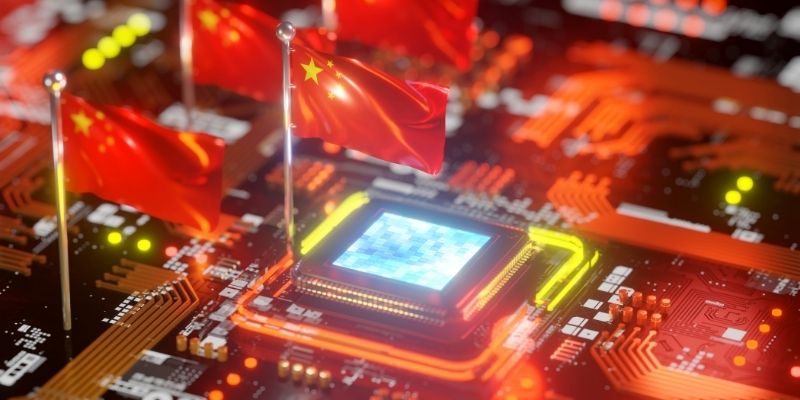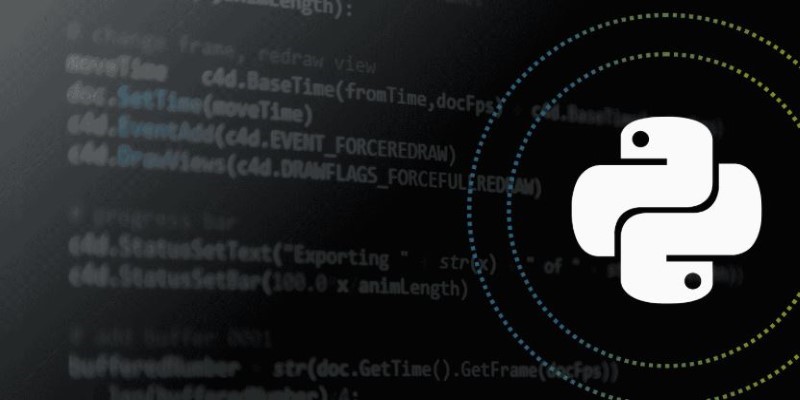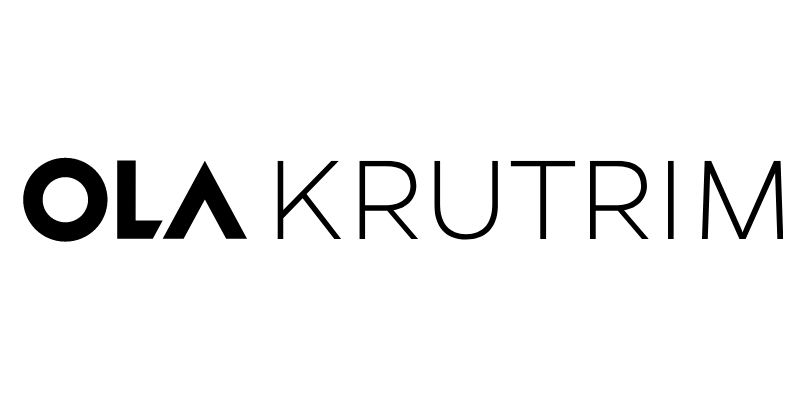Advertisement
For over 10 years, Nvidia has strictly dictated the artificial intelligence hardware industry. Its position as the favoured provider for artificial intelligence chores has been reaffirmed by its robust GPUs and virtually universal support of its CUDA software framework. Since most developers have developed their systems around Nvidia's environment, this dominance makes it difficult for other hardware companies to establish a presence. But now, a concerted and well-coordinated effort of large internet companies and disruptive startups is changing the playing landscape.
The major goal of this movement is to disrupt the current quo and establish an open, cooperative environment free from vendor lock-in so that innovation can flourish unimpeded. This project marks a bigger industry shift towards openness, flexibility, and inclusiveness in artificial intelligence research, allowing a more diverse spectrum of hardware solutions.

The start of the Unified Acceleration (UXL) Foundation signals a turning point in this initiative. Strongweights including Intel, Arm, Qualcomm, Samsung, and VMware finance this new firm under the guidance of the Linux Foundation. It aims to provide a consistent programming paradigm supporting cross-platform interoperability, reducing the need for proprietary software ecosystems.
The UXL Foundation seeks to provide developers the tools and frameworks they need to design and deploy artificial intelligence applications on many hardware platforms, free from vendor-specific APIs like CUDA. Because performance and usefulness drive innovation instead of the limitations imposed by closed systems, this helps to build a very interoperable environment.
The UXL Foundation fosters industry-wide collaboration through open-source contributions and common development guidelines. The aim is to create a neutral space where developers and hardware companies might co-create scalable, device-agnostic artificial intelligence solutions. This initiative is expected to drastically lower barriers to admission for new rivals and intensify the competitiveness.
Creating the UALink Promoter Group complements the UXL Foundation's goals. Emphasising a consistent approach for connecting artificial intelligence accelerator processors, this alliance includes industry titans like Intel, AMD, Microsoft, Meta, Google, and Cisco. Aiming straight at assaulting NVLink technology, which today rules high-performance interconnects in artificial intelligence data centres, the team's activities
By developing open standards for chip-to-chip communication, the UALink Group aims to eradicate compatibility problems that have traditionally hampered hardware diversity. This approach will let data centres mix and match components based on performance needs and economic constraints without being locked into a single provider, permitting easy interchange among various supplier processors. These open connection rules seek to expand artificial intelligence technologies, reduce latency, and boost data flow. The change also creates the possibility for a better ecosystem wherein the hardware of several manufacturers may coexist and improve one another, therefore accelerating creation all around.
Among the companies contesting Nvidia's dominance, AMD and Intel are making some of the most interesting changes. Among prominent examples include AMD's MI300X GPU. With a 5.3 TBps bandwidth and an astonishing 192GB of HBM3 memory, it has attracted large customers like Meta and Microsoft. Run on these CPUs, sophisticated AI models like Llama 3.1 prove AMD's growing influence in the AI arena.
Intel is also working on its Gaudi series of artificial intelligence accelerators. Designed for outstanding performance and energy efficiency, the Gaudi 3 chip offers a fair replacement for Nvidia's top GPUs. Intel stands out with its OneAPI programming system, an open-source platform supporting CPUs, GPUs, and FPGAs among other processing units. This design allows developers to generate once-run code anywhere, reducing the friction required to customize programs for different hardware.
These developments point to a general trend: big hardware businesses are not content to catch up. Rather, they actively support novel value propositions combining simple computational capacity with open platforms and developer-friendly tools. This sharpens the competition and expands the options accessible to businesses using artificial intelligence technologies.
Notwithstanding heavy U.S. export restrictions and geopolitical challenges, Huawei maintains its dominance in artificial intelligence. The corporation's most recent Ascend 910B microprocessor release reflects its commitment to technical excellence and self-reliance. Since it can surpass Nvidia's H100 GPU in certain tests, Huawei claims the CPU is a serious opponent in high-performance artificial intelligence computing.
Along with large R&D expenditure, Huawei's strategy focuses on domestic supply chains and proprietary architecture. The company's tenacity indicates that inventiveness might blossom even under strong outside pressure. The success of Huawei also supports other non-US businesses aiming to challenge Nvidia's predominance without Western technological access.
Though Huawei's presence in Western markets is minimal, it is very important in Asia and emerging nations. By offering strong alternatives and aligning itself with open ecosystem ideals, Huawei is helping to divide Nvidia's once-unified market hold.
Beyond the corporate giants, a wave of startups delivers fresh ideas and creative technologies to the artificial intelligence hardware space. Cerebras, for example, has constructed the largest chip ever made—the Wafer Scale Engine (WSE)—using about 4 trillion transistors. Designed for artificial intelligence, like large language model training, the WSE offers unparalleled processing capability to challenge established chip designs.
Other companies, such as SambaNova, are creating specialist hardware designs intended for certain artificial intelligence applications. These companies have agility and specialised expertise to counter Nvidia's lack of brand recognition and financial might. By stressing uncommon performance requirements like task-specific optimisation or power efficiency, they are carving out significant roles in the scene of artificial intelligence hardware.
Startups engage with academic institutions and adopt non-proprietary software environments, increasing the open ecosystem. Many of their works eventually influence traditional hardware design; their work often serves as the proving ground for audacious ideas. Therefore, they are crucial for preserving the industry's dynamic and forward-looking nature.
This industry-wide endeavour from its foundation is driven by the belief that open standards are essential for the sustained development of artificial intelligence. Though robust, private technologies often result in silos that restrict interaction and impede down innovation. Open platforms eliminate these challenges, enabling a more democratic and readily accessible process of artificial intelligence research.
Hardware makers and developers may create modular, interoperable, and customisable artificial intelligence systems by driving open standards. This is especially important as artificial intelligence applications are increasingly intertwined into government, finance, education, and healthcare sectors. Open ecosystems go beyond their constraints as they ensure that technology advancements are available to the whole planet instead of just a few privileged firms.
Furthermore, reducing development time and costs is an open criterion. By developers not rebuilding software for every new hardware platform, organisations may avoid the financial risks associated with vendor lock-in. These savings will accelerate artificial intelligence implementation globally and in many different areas.

Driven by an openness, interoperability, and common commitment, the landscape of artificial intelligence hardware is evolving. Built on performance and proprietary software, a collection of IT behemoths, startups, and open-source advocates poses an aggressive danger to Nvidia's long-standing leadership. Projects like UALink Promoter Group and the UXL Foundation demonstrate how dedicated the industry is to providing a more inclusive and competitive environment.
More choices, lower pricing, and faster technological improvement will benefit developers and companies as they continue to innovate and diversify the hardware ecosystem— AMD, Intel, Huawei, and Cerebras, among others. This movement is not just about toppling a market leader but about creating a future where openness, collaboration, and universal access guide artificial intelligence development. In such a future, everyone—not just those with means to engage in a single ecosystem—can realise the genuine potential of artificial intelligence.
Advertisement

Top AI hardware vendors join forces to compete with Nvidia and reshape the AI infrastructure market.

How to use Python logging the right way. This guide covers setting up loggers, choosing levels, using handlers, and working with the logging module for better debugging and cleaner code tracking

A venture capital firm announces funding initiatives to support early-stage startups building innovative AI tools.

Trying to choose between ChatGPT and Google Bard? See how they compare for writing, research, real-time updates, and daily tasks—with clear pros and cons

Are you curious about how AI models can pick up new tasks with just a little training? Check out this beginner-friendly guide to learn how few-shot learning makes it possible.

Learn about fintech’s AI challenges: explainability gaps, synthetic identity fraud, compliance requirements, and others.

Want to launch surveys quickly? Learn how Survicate lets you create and customize surveys with ease, collecting valuable customer feedback without hassle

Discover how a steel producer uses AI to cut costs, improve quality, boost efficiency, and reduce downtime in manufacturing

Curious about OLA Krutrim? Learn how to use this AI tool for writing, summarizing, and translating in multiple Indian languages with ease

Explore real vs. perceived risks of AI beyond fear-mongering and media hype in this balanced, insightful analysis.

Learn the basics of Physical AI, how it's different from traditional AI, and why it's the future of smart machines.

Explore the features, key benefits, and real-world use cases of ERP AI chatbots transforming modern enterprise workflows.